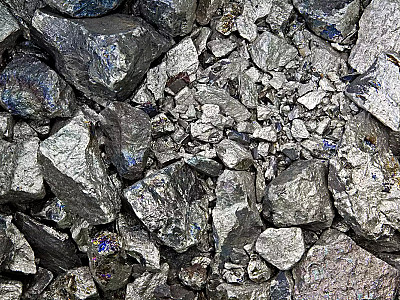Largest Forest Area #8: Indonesia is Still Struggling to Meet Global Carbon Credits’ Needs
Learn Indonesia's Efforts and Struggles to Fulfill Global Carbon Credits Demand



Nickel-containing materials play a major role in our everyday lives—from food preparation equipment to mobile phones, medical equipment and transport, buildings and power generators. Compared with other materials, nickel-containing products possess better corrosion resistance, greater toughness, more strength at high and low temperatures, and a range of special magnetic and electronic properties. Therefore, most nickel production is used for alloying elements, coatings, and batteries.
More than 80 per cent of nickel production is used in alloys. There are up to 3000 nickel-containing alloys in everyday use. About 90 per cent of all new nickel sold each year goes into alloys, with two-thirds going into stainless-steel manufacturing. When alloyed with other elements, nickel imparts significant toughness, strength, resistance to corrosion and various electrical, magnetic and heat-resistant properties.
Alloys are classified into ferrous and non-ferrous alloys, the first of which includes stainless steel. Stainless steel is used widely in the chemical and construction industries, motor vehicles and in consumer products such as sinks, cooking utensils, cutlery and home electric appliances like refrigerators and washing machines.
Nickel-based alloys include superalloy, corrosion resistant alloy, wear-resistant alloy, precision alloy, shape memory alloy and Hydrogen storing alloy. The above alloys are widely used in aviation, shipbuilding, the chemical industry, electronics, medicine and the energy industry.
Nickel plating refers to covering a durable and corrosion-resistant coating on steel and other metals. Its corrosion resistance is 20% to 25% higher than zinc plating. Nickel-plated items are beautiful, clean, and not easily rusted.
Nickel electroplating is second only to electroplating zinc, and its consumption of nickel accounts for about 10% of the total nickel output. Nickel coatings primarily refer to electroplated nickel, which is used to provide hard-wearing decorative and engineering coatings such as 'nickel-plating', 'electroless nickel coating' or 'electroforming'. Nickel electroplating coating has high stability in the air and has an excellent polishing performance. The relatively high firmness of the coating can improve the wear resistance of the surface of the product. When done in combination with silicon carbide it is known as composite plating, such as in the coating of coins.
Nickel is also used in the field of batteries, mainly nickel-hydrogen batteries, chromium-nickel batteries, and nickel-manganese batteries. In recent years, the fastest-growing battery is MHx-Ni battery, which has the advantages of being non-toxic and emitting no pollution, the battery reserves are 30% more than nickel-cadmium batteries and has a longer service life.
The MHx-Ni batteries are mainly used in mobile communications, notebooks, video recorders, and other fields. At the same time, they are also used in military industry, national defense, and high-tech devices like phones and tablets. Cars powered by such batteries, also known as electric vehicles, have also been put on the market.
Interested to know more about the nickel industry in Indonesia? Check out our services and contact us to be connected with our impressive advisors.
We will give you updates of our latest news
Learn Indonesia's Efforts and Struggles to Fulfill Global Carbon Credits Demand

When the COVID-19 pandemic hit the nation, domestic village tourism has offered an alternative path to recovering Indonesia’s tourism industry.

See must-know facts related to carbon credit and the market in Indonesia

Askpert.id's Expert Speaker, Mr. Alan Syahputra, guided Growpreneur by BRI finalists on how to leverage online and offline channels for beauty and wellness business growth.
